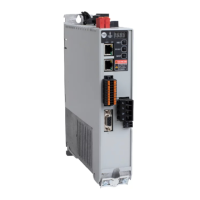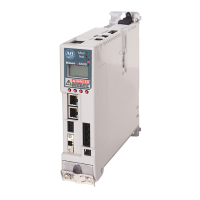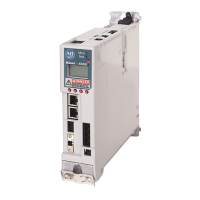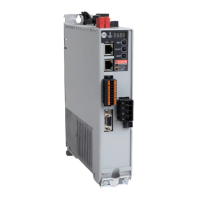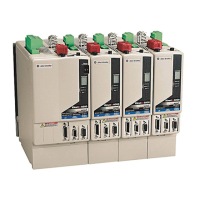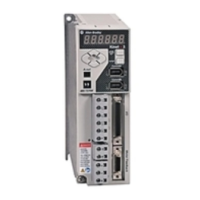416 Rockwell Automation Publication 2198-UM002L-EN-P - October 2021
Appendix F Motor Control Feature Support
The Static test requires that you enter initial estimates for Rated Flux Current,
Rated Slip Speed, Stator Resistance (Rs), Stator Leakage Reactance (X1), and
Rotor Leakage Reactance (X2) into the Motor Model fields.
• For the Logix Designer application, version 29.00 or later, initial
estimates are populated by the controller.
• For the Logix Designer application, version 28.00 or earlier, this can be
done by running and accepting the results of a Calculate test, or by
entering the values directly into the Logix Designer application.
Dynamic Motor Test
Dynamic tests are run with the motor disconnected from the load because the
motor shaft turns and there are no travel limits. This is often the most accurate
test method. During this test, the Stator Resistance (Rs), Stator Leakage
Reactance (X1) and Rotor Leakage Reactance (X2) values are measured in a
series of static tests. The Rated Flux Current is measured during a rotational
test, in which the drive commands 75% of the motor rated speed.
The rated slip speed is measured during a second rotational test, in which the
drive commands a speed (default of 100% of the motor rated speed) and set a
torque limit (default of 50% of the motor rated torque). This quickly accelerates
the motor to rated speed and then decelerates back to zero speed.
The Dynamic test also requires that you enter initial estimates for Rated Flux
Current, Rated Slip Speed, Stator Resistance (Rs), Stator Leakage Reactance
(X1), and Rotor Leakage Reactance (X2) into the Motor Model fields.
• For the Logix Designer application, version 29.00 or later, initial
estimates are automatically populated by the controller.
• For the Logix Designer application, version 28.00 or earlier, this can be
done by running and accepting the results of a Calculate test, or by
entering the values directly into the Logix Designer application.
The Dynamic test uses the Ramp Acceleration and Ramp Deceleration
attributes to set the rotational test ramp-up and ramp-down times. If the
resulting acceleration/deceleration times are less than 10 seconds, 10 seconds
is used. If these attributes are not supported, 10 seconds is also used.
The Dynamic test also uses the IM Slip Test Velocity Command (percent of
rated speed) and IM Slip Test Torque Limit (percent of rated torque) attributes
to define the motion profile for the slip measurement. The default values are
100.0 and 50.0 respectively. The speed command dictates the speed that the
motor spins up to and the torque dictates how quickly the motor reaches that
speed. In general, A higher speed and lower torque results in a longer
acceleration and a more accurate rated slip speed.
IMPORTANT
The Dynamic test does not support travel limits.
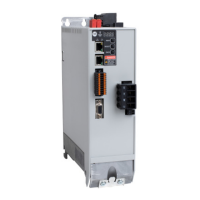
